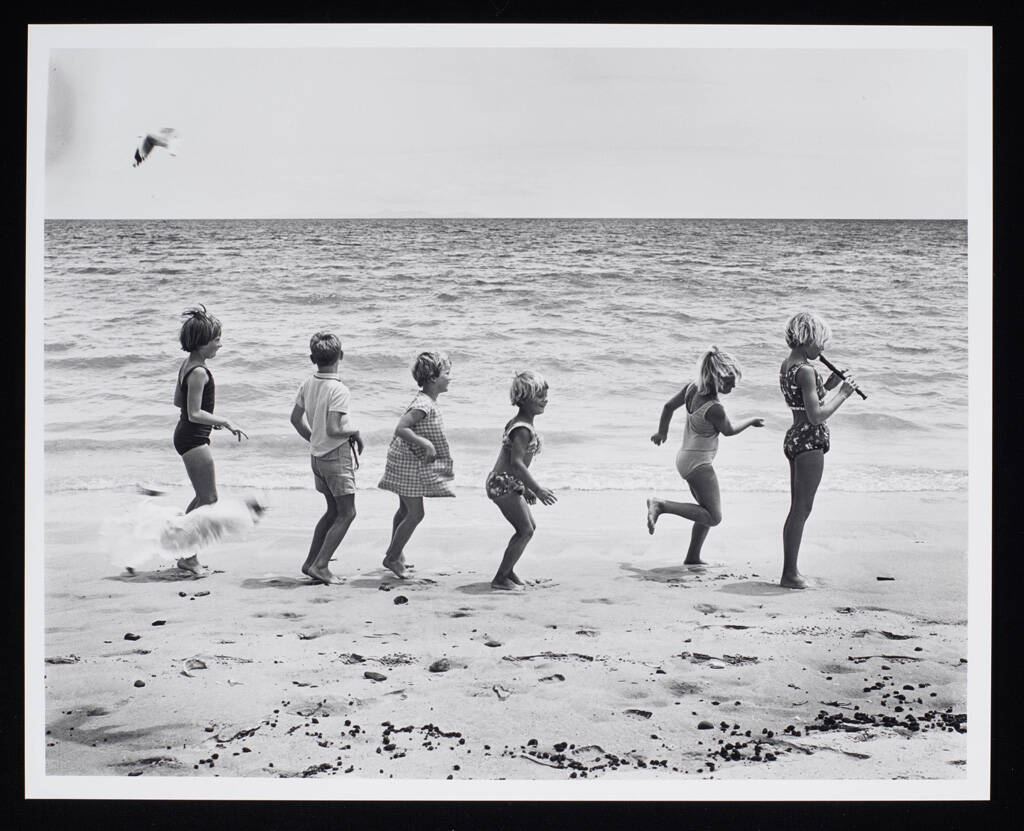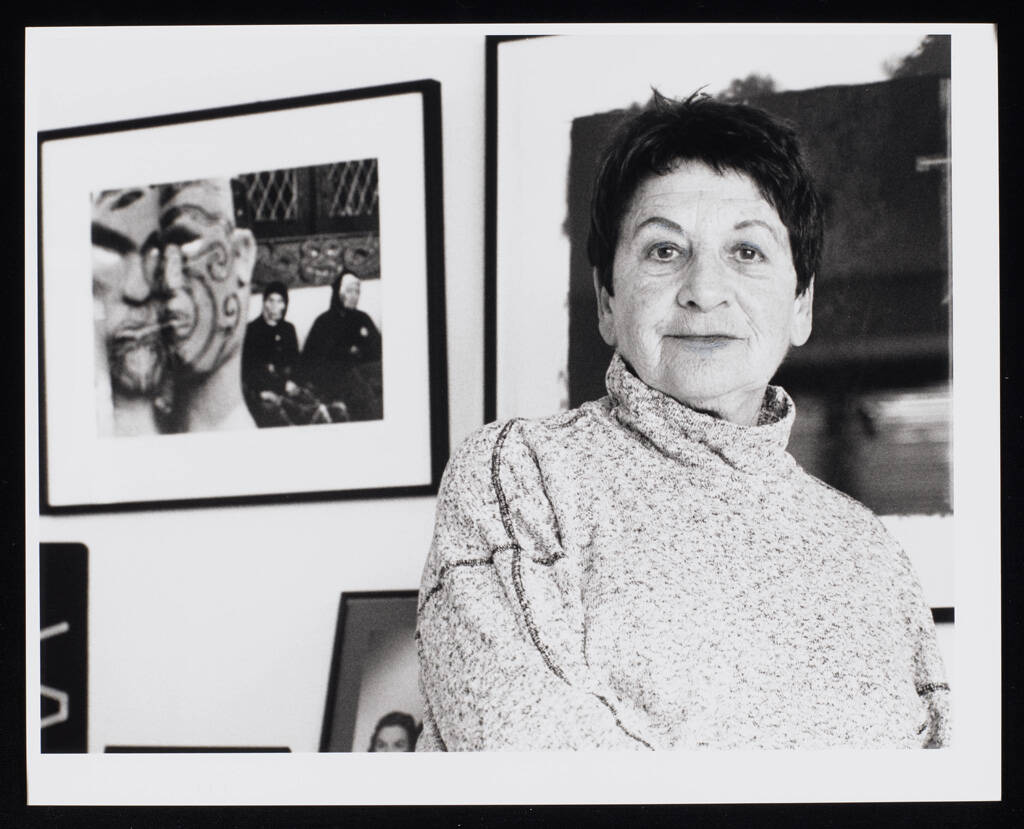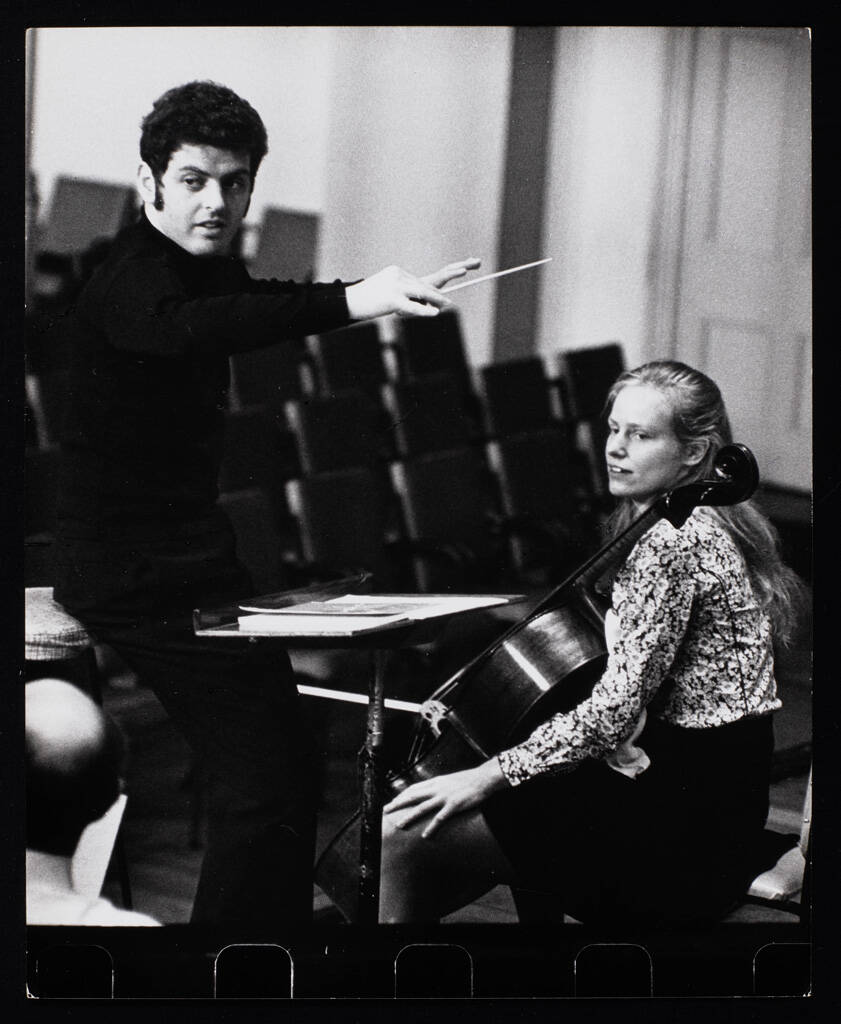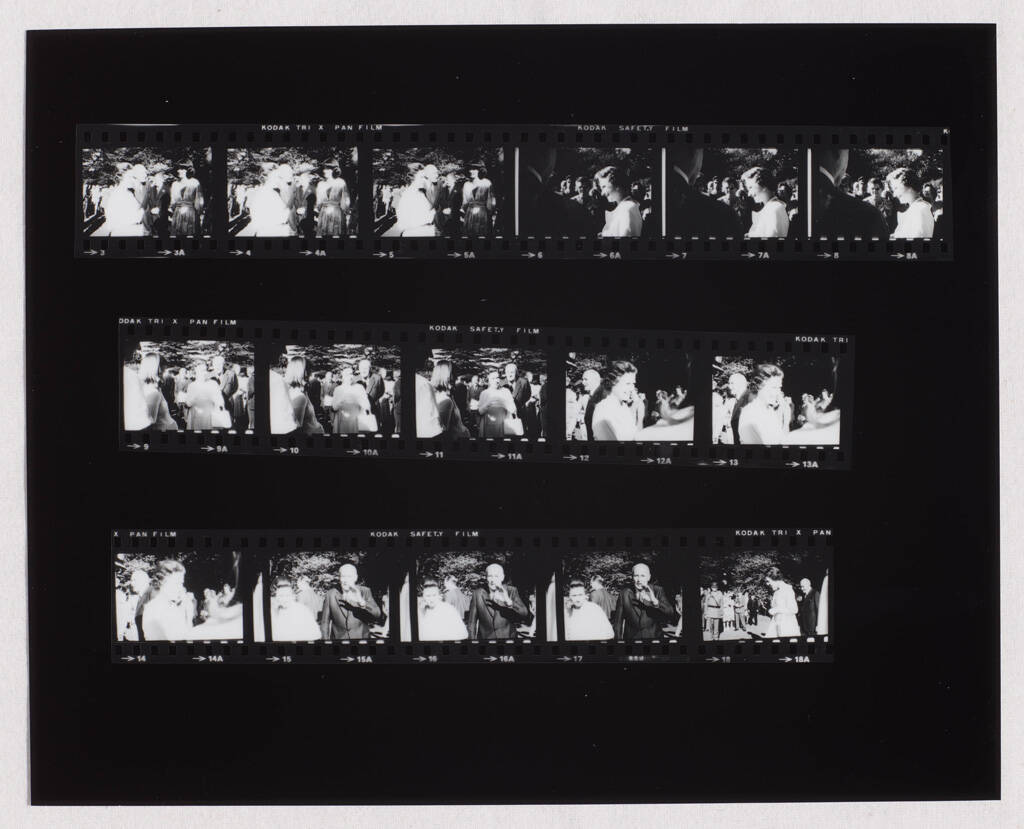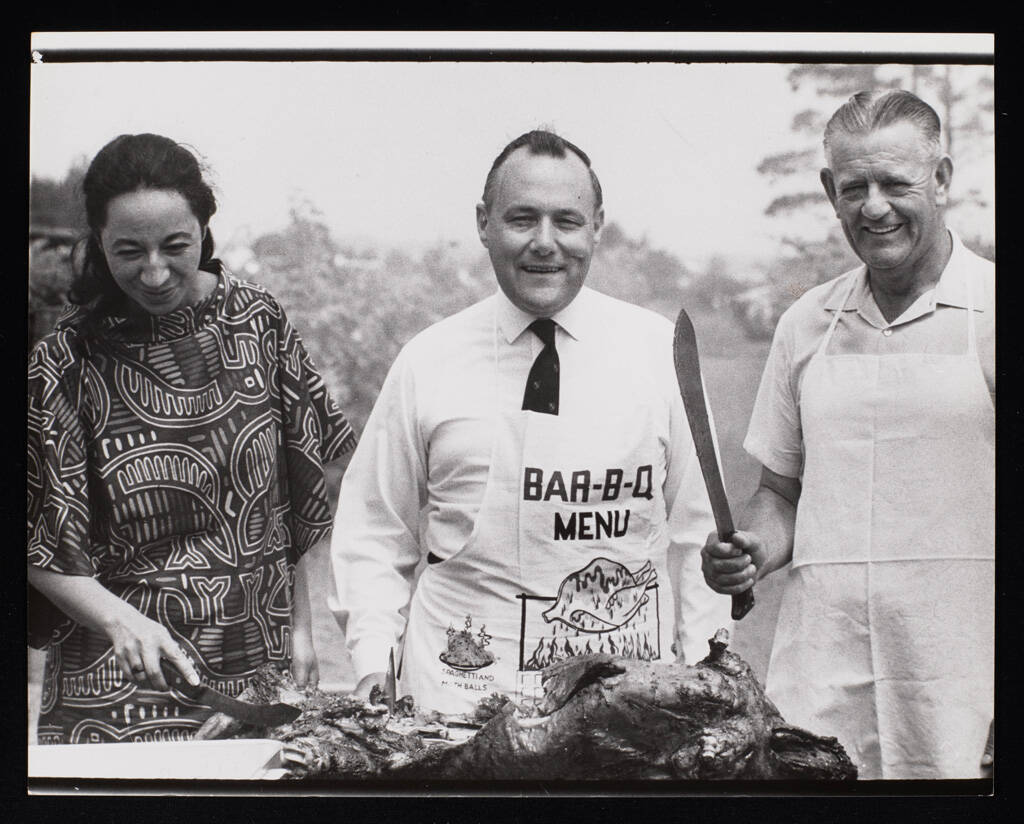‘Caroline, darling, it’s the one of the children on the beach, you know, the best one, they’re all in a row, you know, the one with the flute’. Down the phone line came that familiar deep, husky voice – Marti Friedlander (1928–2016) desperately trying to locate a single photo from her massive archive of over 4000 prints. She knew which she wanted, but did I?
Marti would have loved the fact that now she could simply go onto Auckland Art Gallery Toi o Tāmaki’s website and find digital versions of her works, with a Gallery number that easily identifies each print.
In the years leading up to the Gallery’s 2001 exhibition, Marti Friedlander Photographs, curator Ron Brownson worked alongside Marti, no doubt casting his eye over the full collection, to make a careful selection of those photographs that would eventually be shown. Exhibition prints were made and subsequently donated to the Gallery’s art collection by Marti with assistance from the Elise Mourant Bequest. Brownson, once Research Librarian, suggested to the Friedlanders that they may like to consider depositing the full print archive at the E H McCormick Research Library. And so in 2002, accompanied by a spreadsheet with its own numbering system, Marti’s 4405 photographs and proof sheets came to the Gallery and became known as the Marti Friedlander Archive.
As well as the mostly black and white prints, in various sizes, and proof sheets the Gerrard and Marti Friedlander Charitable Trust have placed with us on long-term loan negatives, correspondence, exhibition ephemera, press clippings, catalogues and publications. When the final deposit comes to us it will be as complete an archive as any in our collection.
